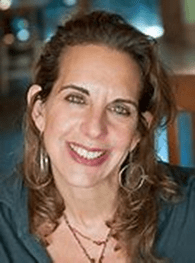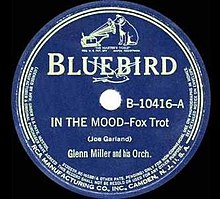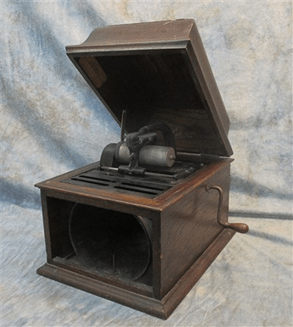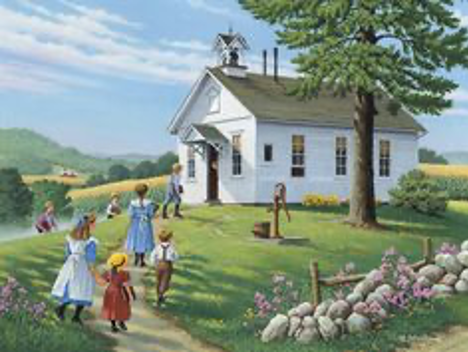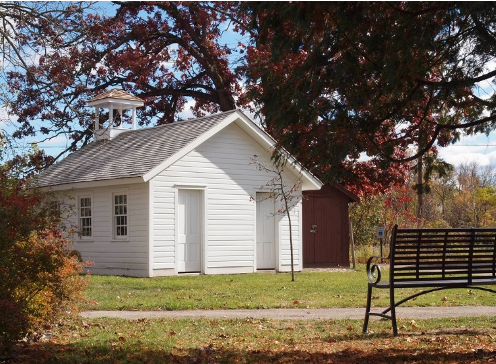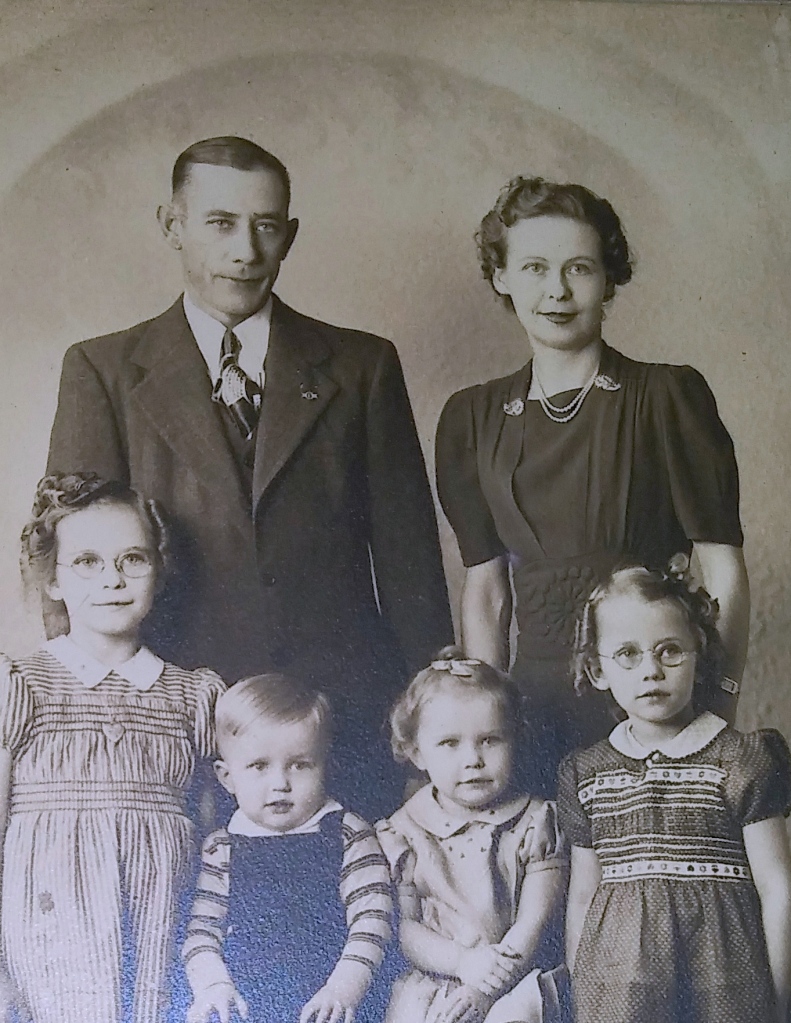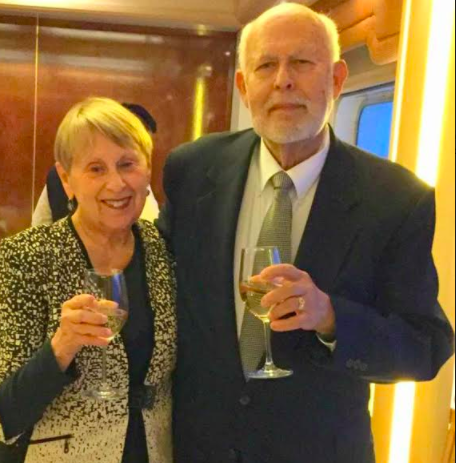For many years at this time my husband and I both had Christmas songs running through our heads. We were preparing for the annual Christmas concert of the Community Chorus. We held rehearsals in Hales Corners, but the seventy or so singers came from many different communities in the Milwaukee area.
For over forty years, our director was an energetic, talented man, Jerry Jenkins, from Greendale. Most of his career had been with the Whitnall School District, and many of the Community Chorus members had gained their love of music under his direction.
Jerry died this year, on August 18, yet even in his final month he thought he’d be able to direct the chorus for one more concert. Although the Community Chorus will be under new direction, many of us in the audience and in the chorus will be remembering Jerry.
At his funeral service, Jerry’s longtime friend, Judi White gave a beautiful tribute to our much-loved musician. She has given me permission to use parts of her eulogy here.
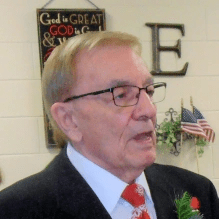
* * * * * * * * * * * * * * * * * * * * *
Judi White’s Tribute
Beethoven is widely regarded as the greatest composer who ever lived. Mozart’s music is admired for its melodic beauty, formal elegance and richness of harmony.
And from this day on – Gerald A. Jenkins will forever be remembered as a piano virtuoso, teacher, arranger and conductor who lived and breathed and shared the love of music his entire life.
Jerry was born in Pembine, WI, a small town located 80 miles north of Green Bay in Northern Marinette County. Pembine started as a logging community in 1887, and a lumber camp still operated there when Jerry was just a toddler. Jerry’s father was the mayor of Pembine for a spell but Jerry said that the population was so small that if you hung around long enough everyone got a turn at being mayor!
Jerry was the oldest of three children born to August and Mildred Jenkins; with younger sister Erma arriving 4 years later and little brother, Clayton four years after that. Born with a hole in his heart, he had to leave strenuous activities and sports to his siblings while his own interests turned to music – the piano in particular, but I did hear that he was known to play a pretty mean polka on the accordion. Though he never talked about that.
As a student of almost every piano teacher in Pembine, Jerry advanced at a young age to a level of prowess beyond his teachers. Even a Catholic nun clutched her rosary beads, looked to heaven and said: “I have nothing left to teach this young man.”
He tried to pass his talent on to Erma but in frustration would close the piano lid on her little hands. Nonetheless, they did form a brother/sister act that entertained the patrons in his parents’ tavern – Jerry at the piano and little Erma singing right alongside. In his adult years he tried to teach his niece Margie to play, but didn’t smash her fingers. He used money as the incentive, offering her 25 cents for each song she learned. Unfortunately, Margie says, she never learned.
During his teen years, Jerry stocked the family bar and worked as a caddy at a local golf course. Then, after graduation from high school, he put on his Buffalo Bill buckskin jacket –complete with fringe on the chest – and bravely made his way to the BIG CITY of Milwaukee and attended college at UWM. Not too long ago that Jerry told me he wished he still had that jacket!
Academia and music filled his studies, and with degree in hand it wasn’t long before he found his first teaching job at the high school in Lake Mills, WI. There he lived in a rooming house for a while with a kindly landlady who supplied the meals and even packed him a lunch to take to school. He wasn’t much older than the students he would be teaching!
As time moved on he took on the position of director of the Moravian Church Choir in Lake Mills, a position he held for 50 years. Many of his former Lake Mills students joined that choir and some are still in it today.
It was in his early twenties that Jerry underwent his first open chest surgery to repair the hole in his heart, a heart that would never be as strong as he hoped and that would eventually contribute to his passing. It was his heart that kept him out of the service when the Vietnam War called; and it was a heart that broke when his brother Clayton, who entered that war as a Special Forces Marine lost his life in June of 1969.
Jerry’s career path led back to Milwaukee, and to the Whitnall School District where he taught grade school, middle school, and high school classes for 29 years – often traveling back and forth between three different classrooms, eating his lunch on his lap.
It was in those years that Jerry continued to touch the lives of thousands of young people, through classroom instruction, his many choirs and glee clubs, and the numerous state competitions for which he prepared his students and choirs. He also served as accompanist for community-wide musicals.
For fun Jerry became involved in the annual talent shows and casino nights put on by the members of the St. Martin of Tours church in Muskego. And what fun it was! These events drew musicians, actors and wannabe’s from all around metro Milwaukee and beyond. His talent became widely recognized. It was at that time Jerry became good friends with Hales Corners resident Jim Wensing, who became a founding member of the Community Chorus. Jim had a beautiful Irish tenor voice and Jerry accompanied him on gigs throughout the state. While Jim had visions of glory, Jerry lugged his suitcase full of music from job to job. They rarely earned enough to pay for gas, but who cared? They had fun.
As luck would have it, once a year Jerry would accompany longtime choir director, John Munger, for his annual Fourth of July concert in downtown Greendale. It was there we learned of Jim’s gift of blarney because after the concert in 1984 Jim convinced Jerry to become the new director of the Community Chorus. Jim sweetened the deal by offering a salary which the bare-bones chorus could never afford – because they had no money in the treasury.
In spite of all this talent and public recognition, Jerry remained a very private person. He lived simply, renting an apartment in Greenfield for so long he probably paid for half the complex. He was an avid Badger and Packer fan, and during COVID began to follow the Bucks. He enjoyed spending time with his sister Erma and her children. He also liked walking at Southridge, meeting friends for breakfast, and practicing, practicing, practicing. His neighbors will definitely miss hearing Christmas music in August!
Like all of us, he did have a few…quirks:
• like storing light bulbs in his dishwasher.
• and never letting anyone into his apartment. If we needed to drop something off, these were the rules: Knock – Drop – Run.
• He never ever talked age or about his “soup day.” (This was our code for birthday because I made soup his gift.)
• And how about Union Time – rehearsal started at 7:00 p.m. Not 6:59 or 7:02 –
7:00 p.m. on the nose! But whenever you’d say, “I’ll meet you at such and such a time,” – annoyingly he’d always be there 10 minutes early.
• And what was it with the post-it notes and paper clips? Look around his stand after rehearsal and you’d find a pile of crumpled notes and enough paper clips to string a chain from here to Forest Home Avenue!
• Jerry had perfect pitch, a metronome in his head AND he was clairvoyant: as in, “I could hear the tenor note missing in that measure.”
Cooking was his kryptonite – I remember the time he bought an apple pie baked in a bag from the Elegant Farmer in Mukwonago. Well, he liked his pie warm so he put the pie along with its grease-coated bag into the oven to warm it up. And you guessed it – the bag started on fire, the apartment filled with smoke, and Jerry panicked, throwing a pan of water into an electric stove. Needless to say, he never got to eat that pie and he never again bought anything baked in a bag. (He did get to meet the nice oven repair man and after that day he switched to frozen banana cream pie.)
Recently, there was a repeat performance in his school of culinary mishaps; only this time it was a forgotten pizza in the oven that started on fire. Jerry grabbed the burning pizza and flung it on the floor where it landed cheese side down and to this day is melded to the linoleum. [Aside, to niece Margie: Margie, I’m warning you that when you pick up that rug in front of the stove you will uncover a petrified cheese pizza – with more than a bit of charring around the edges. Take a tip from the Beatles and “Let It Be.”]
Technology – don’t even get me started. Jerry thought technology was an invention of the devil! Cell phone . . .are you kidding? This man is still mad at AT&T for dropping the blue princess phone from their product line. Computer, lap top, email, tweet, Twitter, texting –
all words from a language so foreign it was like hearing the voice of Charlie Brown’s teacher – woa woa woa! – and he would just glaze over.
If you were lucky enough to be family or friend he was generous to a fault: loyal, supportive, thoughtful and willing to lend a hand, a buck, or a shoulder to cry on. Jerry liked things even keel – no conflict or drama. He was uneasy with unrest. And no political talk, PLEASE!
Never wanting the limelight and without losing too much hair, Jerry directed, guided, pushed, pulled, scolded, and led the Community Chorus for 39 years. That’s 78 seasons with 16 songs a season and 13 weeks of rehearsals each, not to mention the sing outs and public concerts…you get the picture. He had to love it to do it!
He directed when he was sick, when the air conditioning blew his music off the stand, when an evening concert at the Domes was so dim he asked that the overhead lighting be turned on (spoiler: there is no overhead lighting at the Domes). He even directed when there were more of us on the risers than people in the audience…all with that perfect conductor’s stance and that eye roll that silently sent the message: WATCH MY BEAT!
His love of music, his skill at the keyboard and his aim for excellence reached far beyond the classes he taught or the choirs he led. For his music made the world a bit better, a bit happier – and that is the true measure of success.
After a lifetime of piano, his saddest days came when he could no long play because his fingers would bleed from the blood thinners he needed to keep his heart going.
You could say his life and career can be compared to tossing a stone in the river…you never really know where the ripples will go. One of his students went on to Broadway, one went on to the opera; many direct choirs of their own and one, a published composer, recently dedicated one of her compositions to him. We can all agree that his legacy will live on through his students, his choirs, his family, and those lucky enough to call him friend.
Jerry always got nervous if my narration ran too long … but before I go I’d like to share a short prayer that found me the day before Jerry took his final BOW:
May I go now?
Do you think the time is right?
May I say goodbye to pain filled days and endless sleepless nights?
I’ve lived my life and done my best, an example tried to be.
So can I take that step beyond and set my spirit free?
I didn’t want to go at first, I fought with all my might.
But something seems to draw me now
to a warm and loving light.
Thank you all for loving me. You know I love you, too.
That’s why it’s hard to say goodbye and end this life with you.
So hold me now, just one more time and let me hear you say,
because you care so much for me,
you’ll let me go today.
* * *
Thank you, Judi White, for this lovely tribute to a remarkable man.


